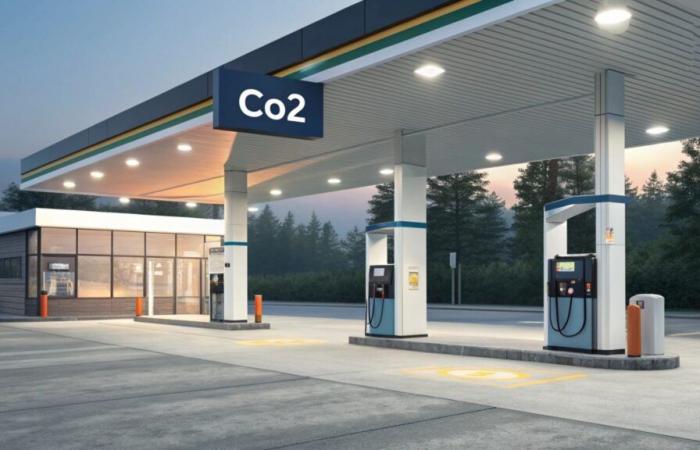Carbon dioxide, long considered a scourge for the climate, could well become an ally. A team of scientists has developed a completely new type of process capable of converting this gas into ultra-efficient fuel.
Electro-biodiesel, the result of this innovation, displays 45 times greater efficiency than biodiesel from soya. Unlike traditional methods which mobilize vast agricultural areas, this approach is based on electrocatalysis, a chemical process using electricity to transform CO2. The researchers, from renowned American institutions, published their results in Joule.
The process begins with electrolysis that splits carbon dioxide into biocompatible components like acetate and ethanol. These molecules serve then matter first for microbes, capable of transforming them into lipids or fatty acids, the bases of biodiesel. L’ensemble takes place with an unprecedented efficiency of 4.5% of solar conversion into molecules.
To achieve this result, scientists designed an innovative catalyst combining zinc and copper. The latter facilitates the production of carbon intermediates, rapidly converted by a modified strain of Rhodococcus jostii. Ce microbeknown for its high lipid content, has been optimized to maximize yield.
In addition to its effectiveness, this method could have a positive environmental impact. Every gram of fuel product would remove 1.57 g of CO2 from theatmosphere. A notable advance when we know that classic biodiesel emits up to 9.9 g of CO2 per gram manufactured.
Production requires 45 times less land than soy biodiesel, a major advantage given the pressure on agricultural land. According to the researchers, this technology fits perfectly into a circular economy, reducing dependence on fossil fuels.
The potential for such innovation extends beyond fuel. The same principles could be used to make chemicals, materials and even food ingredients. With emissions close to zero, or even negative, this process offers a promising solution for the most polluting industries.
If this system is deployed on a large scale, it could transform the global energy sector. However, there remain problems to overcome to make this technology economically viable, in particular the high cost of electrocatalysis.






